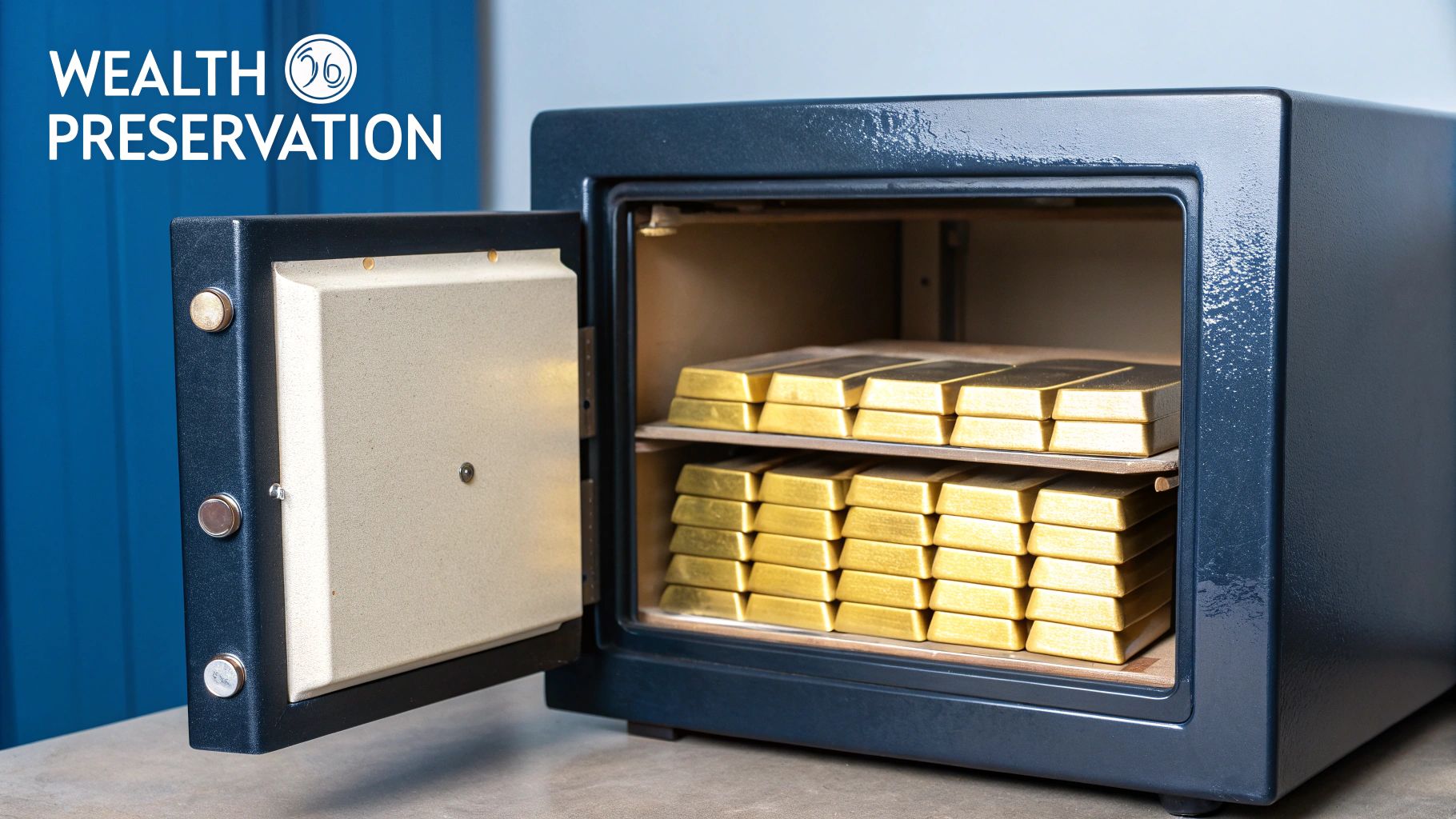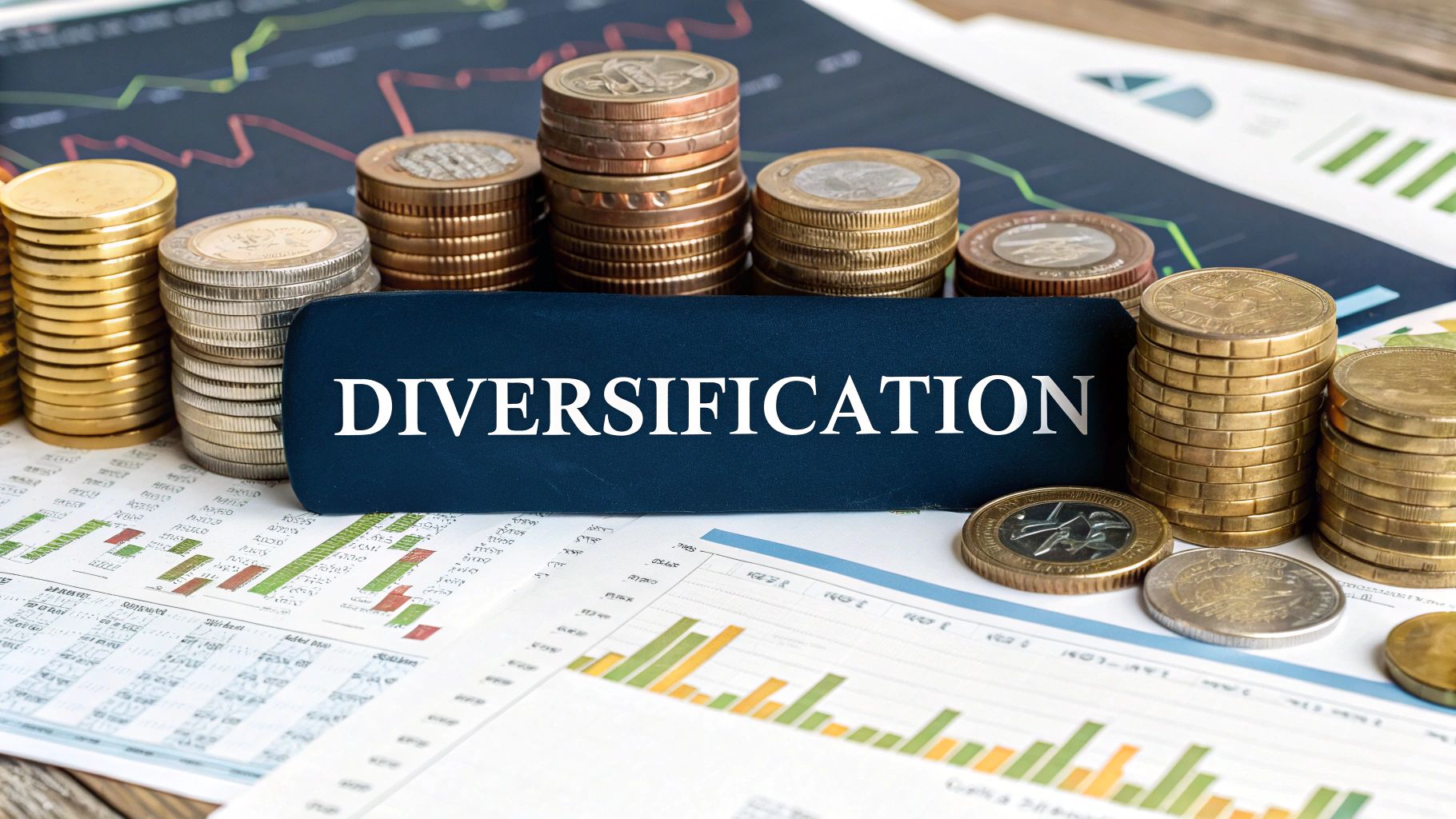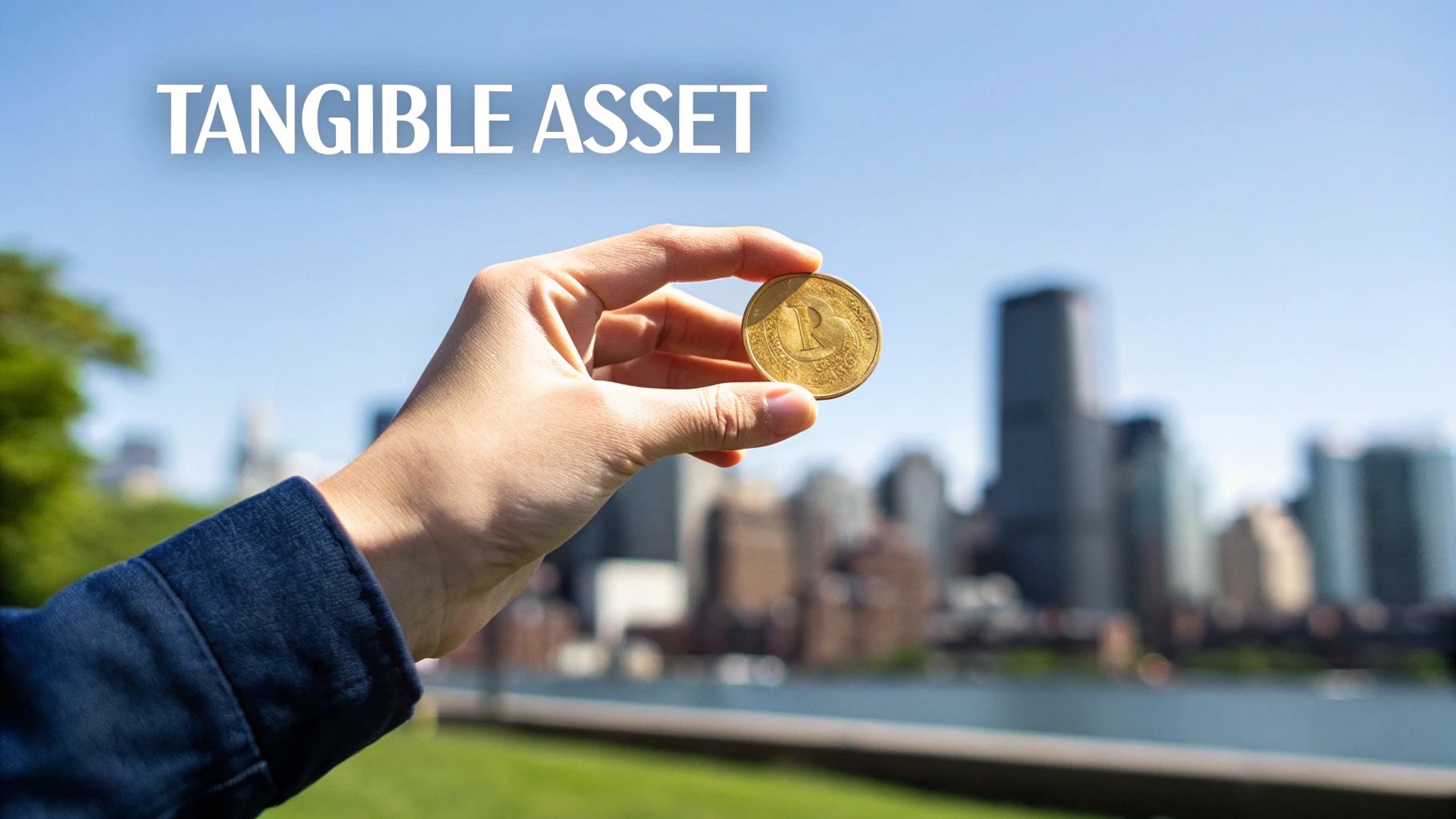Understanding Why Gold Outshines During Inflation

Gold has proven itself time and again as one of the most effective hedges against inflation. When prices for everyday goods and services climb higher, gold prices typically rise alongside them – and often even faster. We saw this clearly during the COVID-19 crisis, when gold hit all-time highs as investors sought safety amid the economic uncertainty. This real-world example shows why so many people turn to gold to protect their purchasing power when inflation strikes.
How Gold Preserves Wealth
The key to gold's staying power lies in its rarity and deep-rooted status as a store of value. Unlike paper money that central banks can print at will, there's only so much gold in the world. This natural scarcity helps maintain its worth. Gold also benefits from universal recognition – people across cultures and throughout history have prized it as valuable. These qualities make gold particularly good at holding its value when inflation erodes the purchasing power of regular currencies.
Gold's Performance During Inflationary Periods
Looking at how gold has performed historically gives us clear evidence of its inflation-fighting abilities. Take the 1970s for example – a decade marked by soaring inflation rates also saw dramatic increases in gold prices. This wasn't a one-off event either. Time after time, periods of high inflation have coincided with rising gold values. Such consistent performance over decades helps explain why investors continue viewing gold as a reliable store of wealth when inflation picks up.
Central Banks and Gold Reserves
The fact that central banks worldwide maintain large gold reserves speaks volumes about its enduring value. These institutions don't hold gold merely out of tradition – they keep it because it provides real economic benefits. Gold serves as a tangible backup for currencies and helps stabilize economies during volatile times. This ongoing institutional demand adds another layer of support for gold prices while reinforcing its role as a shield against inflation.
The Psychology of Gold as a Safe Haven
There's also a powerful psychological element to gold's appeal during uncertain times. When markets get rocky, investors instinctively seek out stable, time-tested assets. Gold's thousands of years of history as a store of value make it a natural choice. This flight to safety during turbulent periods creates additional demand that can drive prices higher. For many investors, gold offers not just financial protection but also peace of mind when economic storms gather.
The Art of Portfolio Balance: Gold's Unique Role

Gold's steady nature makes it an essential tool for creating a balanced investment portfolio. Beyond just protecting against inflation, gold shines in its ability to reduce the ups and downs that come with investing. This comes down to correlation – how different investments move in relation to each other. When two investments have a positive correlation, they move up and down together. With negative correlation, they move in opposite directions. Gold tends to move independently of stocks and bonds, showing little to no correlation with these traditional investments.
Diversification Beyond the Basics: The Gold Advantage
This independence from other markets is what makes gold special. When stocks take a hit, the gold portion of your portfolio might hold steady or even gain value, helping protect your overall wealth. Think of it like insurance for your investments – while you hope you won't need it, you're glad to have it when markets get rocky. By mixing gold with stocks and bonds, you can better weather market storms and smooth out your investment returns over time. This becomes especially valuable during uncertain economic periods.
Strategic Allocation: Finding the Right Gold Balance
The amount of gold to hold depends on your comfort with risk and investment goals. If you're more cautious, you might want 10% or more in gold. More aggressive investors often stick to around 5%. Your existing investments matter too – if you own mainly volatile tech stocks, more gold could help balance things out. But if you focus on steady, dividend-paying stocks, you might need less gold to feel secure.
Rebalancing: Maintaining Your Golden Ratio
After deciding how much gold to own, you need to maintain that balance over time. This means regularly checking your portfolio and adjusting when needed. Say gold prices rise sharply, pushing your gold holdings above your target percentage. You'd then sell some gold and buy other investments to get back to your planned mix. This careful approach helps keep your investment strategy on track while taking advantage of gold's price movements. Since gold is easy to buy and sell, these adjustments are usually straightforward to make, making it simple to keep your portfolio properly balanced.
Safe-Haven Strategies: Protecting Your Portfolio in Turbulent Markets

While building a balanced portfolio is essential, understanding how gold performs during major market disruptions can help you make better investment decisions. Over decades of market cycles, gold has consistently served as a reliable safe-haven asset, providing stability when other investments struggle. This comes down to gold's unique properties and long history as a store of value.
Why Gold Performs Well During Market Stress
The reasons behind gold's strength during difficult times are straightforward and practical. First, gold is a physical asset with real value, unlike stocks or bonds which are essentially paper claims on future earnings or payments. This tangible nature gives investors something concrete to hold onto when financial markets get rocky. Second, gold tends to move independently of stocks and bonds – when they go down, gold often stays steady or even goes up. This makes it an effective way to protect your portfolio during market selloffs.
How to Time Your Gold Investments
Making the most of gold's protective qualities requires paying attention to warning signs of potential market stress. This means keeping an eye on both global events and key economic data. For instance, rising political tensions between major powers, signs that a recession may be approaching, or unexpected jumps in inflation can all drive investors toward gold's perceived safety.
Simple Ways to Watch for Market Problems
You don't need complex systems to spot growing market risks. Following quality financial news sources, checking regular economic reports, and staying informed about major world events will give you good insight. The price of gold itself can also tell you a lot – when it starts rising quickly, it often means investors are getting nervous about something.
Key things to monitor include:
- Economic Data: Basic numbers like inflation, economic growth, and jobs figures
- Global Events: Major political changes, conflicts, and policy shifts
- Market Mood: How confident or worried other investors seem to be
Using this information as part of a careful investment plan helps you position your gold holdings effectively.
Staying Calm When Markets Get Rocky
One of gold's biggest benefits goes beyond pure financial returns – it helps investors sleep better at night. Having some money in an asset that has stayed stable through countless crises gives you confidence to stick to your long-term plan when markets get scary. While stocks might swing wildly up and down, gold's steadier performance can help you avoid making emotional decisions out of fear. This psychological benefit of gold investing is often overlooked but incredibly valuable during uncertain times. By keeping some of your portfolio in gold, you're not just diversifying – you're buying yourself peace of mind when you need it most.
Mastering Long-Term Gold Investment Success
Making smart decisions about gold investments requires more than just buying and holding. Let's look at the key strategies that can help you succeed with gold over many years, building on what we've learned about gold's role as a safe haven and portfolio stabilizer.
Timing Your Gold Investments for Long-Term Growth
Gold prices move up and down like any investment, but in ways that often follow broader economic patterns. Rather than trying to time short-term trades, focus on the bigger picture. For instance, gold tends to gain value during periods of high inflation or global uncertainty when investors seek safety. By paying attention to these economic signals, you can make better choices about when to add gold to your portfolio.
Diversification and Holding Strategies for Gold
A well-balanced investment approach means spreading your money across different assets, including gold. The amount of gold you hold should match your comfort with risk and your financial plans. Some investors prefer a larger position of 10% or more for added security, while others might keep it closer to 5% as part of a more growth-focused strategy.
You also have several options for how to own gold. Physical gold like coins and bars gives you direct ownership but requires secure storage. Gold ETFs offer an easier way to buy and sell without worrying about storage. Gold mining stocks provide exposure to the gold market while potentially offering additional returns through company growth. Each choice has its advantages – consider what works best for your situation.
Navigating Economic Cycles and Maintaining Your Gold Position
The price of gold responds to changes in the global economy. During strong economic growth, other investments might perform better than gold. However, gold often proves its worth during economic downturns when other assets struggle. Understanding these patterns helps you make informed decisions about your gold holdings.
Managing your gold investment means regularly checking and adjusting your portfolio. If gold prices rise significantly, you might want to sell some to keep your target balance. During market turmoil, you might choose to increase your gold position for added protection. Thanks to gold's active trading market, you can usually make these adjustments easily, even when markets get choppy. The key is staying focused on your long-term investment goals while making small adjustments as needed to keep your portfolio on track.
Understanding Gold's Market Liquidity

Gold offers investors a key advantage beyond its role as a safe haven and portfolio diversifier: exceptional market liquidity. The ability to easily buy and sell gold gives investors important flexibility to adjust their positions as needed. This practical benefit becomes especially valuable during periods of market uncertainty when other assets may be harder to trade.
How Gold Trading Works
The gold market's deep liquidity means large amounts can change hands quickly without major price swings. This stability proved crucial during March 2020's COVID-19 market turmoil, when gold trading remained smooth while many other markets seized up. With daily trading volume averaging $162 billion and yearly turnover reaching $41 trillion, the gold market's size ensures investors can reliably execute trades when needed. The constant flow of buyers and sellers creates an efficient market where transactions happen seamlessly.
Lower Costs Through Market Efficiency
The robust trading activity in gold leads to narrow bid-ask spreads – the gap between prices to buy and sell. For investors, this translates to lower transaction costs compared to less liquid investments. When you need to adjust your gold position quickly, you won't face steep costs eating into your returns. This cost efficiency matters for both long-term holders and active traders responding to market moves.
Selecting Gold Investment Options
The form of gold you choose affects how easily you can trade it. While all gold investments offer good liquidity, some vehicles stand out:
- Gold ETFs (Exchange-Traded Funds): These funds trade on major exchanges, offering the simplest way to buy and sell gold exposure throughout each trading day.
- Gold Futures Contracts: Also exchange-traded with high liquidity, but better suited for experienced investors due to leverage.
- Physical Gold (Bars and Coins): Though requiring a dealer for transactions, physical gold maintains strong market demand. While slightly less liquid than ETFs, you can still trade physical gold reliably.
Maintaining Control of Your Investment
Gold's excellent liquidity lets you manage your position effectively without sacrificing performance. You can quickly increase gold holdings if you expect market turbulence, or take profits after price gains. This flexibility helps you handle risk while protecting your capital. By picking the right gold investment type and understanding how the market works, you can use gold's tradability to build a more responsive investment strategy aligned with your goals.
Building Your Gold Investment Foundation
Understanding gold's unique role in a portfolio sets the stage for taking practical steps to invest. Let's walk through how to build a solid foundation for your gold investments.
Choosing the Right Gold Investment Vehicle
Getting started with gold investing requires selecting an approach that matches your goals and comfort level. Here are the main options to consider:
-
Physical Gold: Buying bars, coins, or jewelry gives you direct ownership of gold you can hold. While this appeals to many investors, you'll need to handle storage and security. Keep in mind that dealer fees when buying and selling can eat into your returns.
-
Gold ETFs (Exchange-Traded Funds): These funds own physical gold and trade like stocks. They make it simple to invest in gold without worrying about storage. You can buy and sell ETF shares easily through your brokerage account.
-
Gold Mining Stocks: Investing in mining companies adds a business element to gold exposure. Your returns depend on both gold prices and how well the company performs. Mining stocks tend to move up and down more sharply than gold itself.
-
Gold Futures Contracts: These are agreements to buy or sell gold at set prices in the future. Due to their complexity and risk, futures work best for experienced investors who understand leveraged trading.
This table breaks down key differences between these options:
| Feature | Physical Gold | Gold ETFs | Gold Mining Stocks | Gold Futures |
|---|---|---|---|---|
| Tangibility | Yes | No | No | No |
| Storage | Required | N/A | N/A | N/A |
| Liquidity | High | Very High | High | Very High |
| Volatility | Low | Low | High | Very High |
| Management Fees | None | Low | Varies | Commission |
Secure Storage Solutions for Physical Gold
If you buy physical gold, keeping it safe becomes essential. While home safes provide basic protection, they can still be vulnerable to theft. For larger investments, bank safety deposit boxes or professional vaulting services offer better security. These facilities typically include insurance coverage for added peace of mind.
Avoiding Common Mistakes While Building Success
Gold investing comes with its share of potential missteps. Many new investors make the mistake of trying to time short-term price swings. Instead, think of gold as a long-term holding that adds stability to your portfolio. Another common error is paying excessive dealer markups on physical gold. Take time to compare prices from multiple dealers before buying. Look to investors who've successfully used gold to protect their savings during tough economic times for guidance on building a resilient portfolio.
Aligning Your Gold Investment With Your Goals
The most effective gold investment strategy fits your personal financial situation and comfort with risk. Someone close to retirement might want more gold for stability, while younger investors may prefer a smaller allocation to focus on growth. Start by looking at your time horizon and risk tolerance to decide how much gold makes sense for you and which type of investment best matches your needs. This thoughtful approach helps ensure gold strengthens rather than weakens your path to financial security.
Ready to boost your portfolio returns and manage risk more effectively? Explore Coverd, the app designed for options traders who sell covered calls and cash-secured puts. Turn hours of research into valuable insights, optimize your returns, and simplify your options trading strategy. Visit Coverd now and discover how to maximize your investment potential.

Leave a Reply